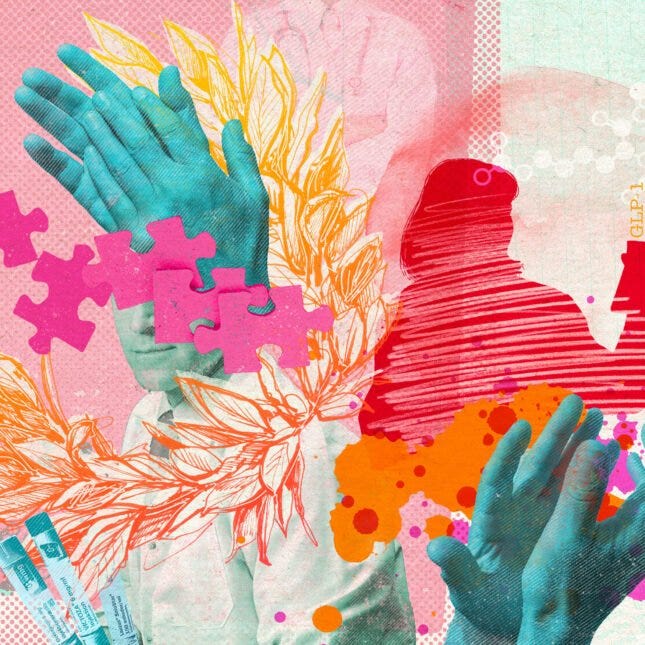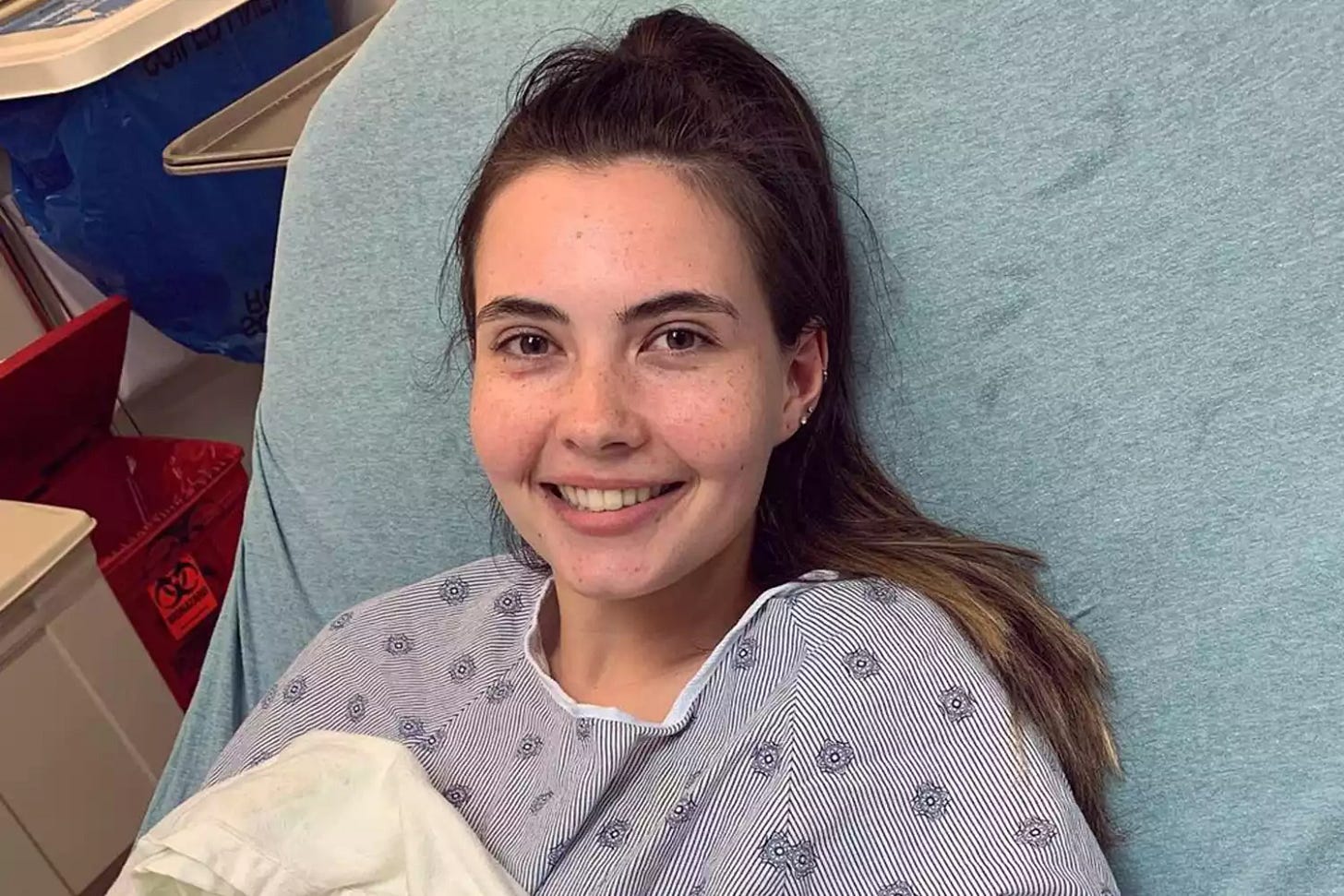Sci-Ed Update 296
Thalamus's role in plasticity, embryo copies for organ harvest, body rhythms sync to music, the uncertainty effect, women scientists shunned, water allergy, SARS-CoV-2 may get worse, AI in anatomy ed
Thalamus Plays a Pivotal Role in Adult Brain Plasticity

Researchers spotlight the thalamus, typically regarded merely as a relay station, as a pivotal entity in adult brain plasticity.
Contrasting prior beliefs focusing largely on the cortex, the thalamus demonstrates a significant role in adapting sensory and motor information, as illuminated through mouse models in vision studies.
While visual input does journey from the retina to the visual cortex via the thalamus, this study accentuates that the thalamus isn’t merely a passive conduit but an active participant in adaptive processes.
Insights garnered could pave the way for innovative therapeutic approaches in treating conditions like lazy eye, shifting focus from the cortex to also encompass the thalamus.
Key Facts:
Critical Component: The removal of the GABA-alpha 1 subunit in the thalamus during mice’s critical vision development period significantly altered traditional visual cortex response, underscoring the thalamus’s role in neural plasticity.
Adaptability Insights: Experiments demonstrated that plasticity occurred in the adult thalamus and was pivotal for alterations in the cortex, revealing its influential presence beyond mere sensory relay.
Potential Therapeutic Applications: The findings suggest that issues traditionally attributed to the cortex, such as lazy eye, may also involve the thalamus, providing a new potential therapeutic
Read more→ AandP.info/1d0
This startup wants to copy you into an embryo for organ harvesting
In a search for novel forms of longevity medicine, a biotech company based in Israel says it intends to create embryo-stage versions of people in order to harvest tissues for use in transplant treatments.
The company, Renewal Bio, is pursuing recent advances in stem-cell technology and artificial wombs demonstrated by Jacob Hanna, a biologist at the Weizmann Institute of Science in Rehovot. Earlier this week, Hanna showed that starting with mouse stem cells, his lab could form highly realistic-looking mouse embryos and keep them growing in a mechanical womb for several days until they developed beating hearts, flowing blood, and cranial folds.
It’s the first time such an advanced embryo has been mimicked without sperm, eggs, or even a uterus. Hanna’s report was published in the journal Cell on Monday.
“This experiment has huge implications,” says Bernard Siegel, a patient advocate and founder of the World Stem Cell Summit. “One wonders what mammal could be next in line.”
Read more→ AandP.info/4pu
Harmony in Hearts: Body Rhythms Sync to Classical Beats

A recent study hints at a harmonious synchronization of movement, heart rate, and even the excitement level among audience members during classical concerts.
This in-depth exploration into the physical responses of 132 individuals during a live performance of classical pieces unveiled a fascinating cohesion in their bodily rhythms, notably in heart and breathing rates. Interestingly, personality traits, such as agreeableness and openness, appeared to elevate the propensity for such synchronization among listeners.
This novel insight opens up a captivating dialogue about the intertwining of music, communal experience, and individual physical responses.
Key Facts:
Concert Synchronization: Significant synchronization was observed in audience members’ movement, heart rate, and breathing during classical performances.
Personality and Synchronization: Individuals scoring higher for agreeableness or openness were more likely to synchronize with fellow audience members.
Breathing Unity: Of all the observed physical responses, breathing rate exhibited the highest level of synchronization among the audience.
Read more→ AandP.info/v04
The Uncertainty Effect with Michelle Lazarus
Dr. Michelle Lazarus, author of the new book, The Uncertainty Effect: How to Survive and Thrive through the Unexpected, joins host Kevin Patton for a lively discussion of of uncertainty in science, medicine, and academia.
00:00 | Introduction
00:50 | Dr. Michelle Lazarus
05:31 | Why Is Uncertainty Important?
17:49 | The Uncertainty of Teaching A&P
28:05 | Uncertainty and Inclusion
36:38 | Uncertainty and Risk
38:48 | Book: The Uncertainty Effect
To listen to this episode, click on the player (if present) or this link→ theAPprofessor.org/podcast-episode-135.html
The Ozempic revolution is rooted in the work of Svetlana Mojsov, yet she’s been edged out of the story
On a mild May day in 1993, about 60 scientists and doctors gathered on a lawn in Copenhagen to commemorate the first International Symposium on GLP-1, the hormone that decades later would become the basis for highly effective diabetes and obesity drugs like Ozempic and Wegovy.
The meeting was a scientific showcase of all the leading experts in the nascent field. But for one of them, a chemist named Svetlana Mojsov, it was also the backdrop to a strange encounter with a former colleague.
At the conference, she bumped into Joel Habener, an endocrinologist she had collaborated with at Massachusetts General Hospital to discover the GLP-1 hormone. It had been a few years since Mojsov left Mass General, and while she was there, she had twice spoken with its intellectual property office about a patent for GLP-1. She had shown them notebooks of her work on the hormone, but they never followed up with her. So at the conference, she asked Habener, who was still with the hospital, if he had heard anything about the patent.
Instead of answering, “Joel turned around and left,” Mojsov said in a recent interview.
Years later, when talking with a biotech company, she learned that Mass General had indeed granted patents in 1992, the year before she ran into Habener. The patents listed him as the sole inventor.
Read more→ AandP.info/y14
After Shunning Scientist, University of Pennsylvania Celebrates Her Nobel Prize

The University of Pennsylvania is basking in the glow of two researchers who this week were awarded the Nobel Prize in medicine for their pioneering work on messenger RNA.
Until recently, the school and its faculty largely disdained one of those scientists.
Penn demoted Katalin Karikó, shunting her to a lab on the outskirts of campus while cutting her pay. Karikó’s colleagues denigrated her mRNA research and some wouldn’t work with her, according to her and people at the school. Eventually, Karikó persuaded another Penn researcher, Drew Weissman, to work with her on modifying mRNA for vaccines and drugs, though most others at the school remained skeptical, pushing other approaches.
Karikó hasn’t only proven her detractors wrong but also reached the pinnacle of science. Her research with Weissman helped lead to the mRNA vaccines that protected people worldwide during the Covid-19 pandemic and now shows promise for flu, cancer and other diseases.
Penn, which patented their mRNA technology, has made millions of dollars from drugmakers that licensed it. And on Monday, when Karikó and Weissman were awarded the Nobel, on top of prestigious science prizes in recent years, the school expressed a different perspective on their work.
Read more→ AandP.info/iyi
Woman, 25, Is Allergic to Water: ‘My Scalp Would Be Bleeding After Showering’
A 25-year-old woman from Fresno is allergic to water, a rare condition that causes her to break out in welts and hives — even from her own tears and sweat.
"I would come out of showers and have huge welts on my skin, and my scalp would be bleeding after showering,” Tessa Hansen-Smith told ABC-30 about her allergy, Aquagenic Urticaria, which she developed when she was 8 years old.
The allergy “is a rare condition in which urticaria (hives) develop rapidly after the skin comes in contact with water, regardless of its temperature,” the National Institute of Health says. And while its causes are unknown, “it most commonly affects women.”
Read more→ AandP.info/3rs
Antigenic evolution will lead to new SARS-CoV-2 variants with unpredictable severity

The comparatively milder infections with the Omicron variant and higher levels of population immunity have raised hopes for a weakening of the pandemic. We argue that the lower severity of Omicron is a coincidence and that ongoing rapid antigenic evolution is likely to produce new variants that may escape immunity and be more severe.
Severe acute respiratory syndrome coronavirus 2 (SARS-CoV-2) is set for continuous circulation in humans owing to its ease of transmission, waning immunity, antigenic evolution and an array of potential animal reservoirs1. A key question is predicting the epidemiological and clinical parameters of this continuous circulation2 and the future population burden of coronavirus disease 2019 (COVID-19).
The comparatively milder levels of disease produced by Omicron, the most recent variant of concern (VOC), in relation to previous VOCs rekindled a variety of wishful narratives about the epidemiology and evolution of the virus. These ideas range from misconceived and premature theories about ‘harmless’ endemicity3, to expectations that widespread immunity renders epidemic waves safe and to hopes that the virus will evolve to be benign.
The notion that viruses will evolve to be less virulent to spare their hosts is one of the most persistent myths surrounding pathogen evolution. Unlike viral immune escape and transmissibility, which are under strong evolutionary pressure, virulence is typically a by-product, fashioned by complex interactions between factors in both the host and the pathogen. Viruses evolve to maximize their transmissibility and sometimes this may correlate with higher virulence, for example, if high viral loads promote transmission but also increase severity. If so, pathogens may evolve towards higher virulence. If severity manifests late in infection, only after the typical transmission window, as in SARS-CoV-2, but also influenza virus, HIV, hepatitis C virus and many others, it plays a limited role in viral fitness and may not be selected against. Forecasting virulence evolution is a complex task, and the lower severity of Omicron is hardly a good predictor for future variants. The prospect of future VOCs featuring the potentially disastrous combination of the ability to reinfect due to immune escape along with high virulence is unfortunately very real.
Read more→ AandP.info/wdq
Ethical concerns surrounding artificial intelligence in anatomy education: Should AI human body simulations replace donors in the dissection room?

The potential effects of artificial intelligence (AI) on the teaching of anatomy are unclear. We explore the hypothetical situation of human body donors being replaced by AI human body simulations and reflect on two separate ethical concerns: first, whether it is permissible to replace donors with AI human body simulations in the dissection room when the consequences of doing so are unclear, and second, the overarching ethical significance of AI use in anatomy education.
To do this, we highlight the key benefits of student exposure to the dissection room and body donors, including nontechnical, discipline-independent skills, awareness and interaction with applied bioethics, and professional identity formation. We suggest that the uniqueness of the dissection room experience and the importance of the key benefits accompanying this exposure outweigh the potential and so far unknown benefits of AI technology in this space. Further, the lack of engagement with bioethical principles that are intimately intertwined with the dissection room experience may have repercussions for future healthcare professional development. We argue that interaction with body donors must be protected and maintained and not replaced with AI human body donor simulations. Any move away from this foundation of anatomy education requires scrutiny.
In light of the possible adoption of AI technologies into anatomy teaching, it is necessary that medical educators reflect on the dictum that the practice of healthcare, and anatomy, is a uniquely human endeavor.
Read more→ AandP.info/3s1






